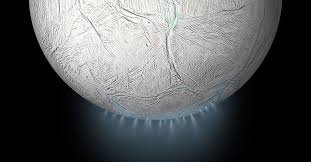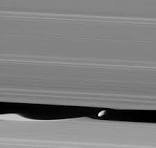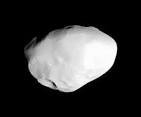Enceladus has active geysers that spew water vapor and ice particles from its south polar region into space. These plumes are a key indicator of a subsurface ocean beneath its icy shell. Scientists believe this ocean is in contact with a rocky core, potentially providing the necessary ingredients for life. The combination of liquid water, energy sources, and organic molecules makes Enceladus a prime candidate for astrobiological research. Some studies suggest that life-supporting energy sources may exist within the ocean. NASA’s Cassini spacecraft provided crucial data about Enceladus, including high-resolution images and measurements of the plumes. Close flybys allowed scientists to analyze plume composition and gather strong evidence for the subsurface ocean. Enceladus is also the source of material for Saturn’s E ring, one of the planet’s largest and most diffuse rings. Despite its significance, Enceladus is relatively small, with a diameter of about 500 kilometers (310 miles), and it orbits Saturn at a distance of approximately 238,020 kilometers (147,899 miles).

/ Oct 16, 2025
Menu
Enceladus Geysers Reveal Subsurface Ocean and Potential Life
noor-e-aisha
August 22, 2025
0







